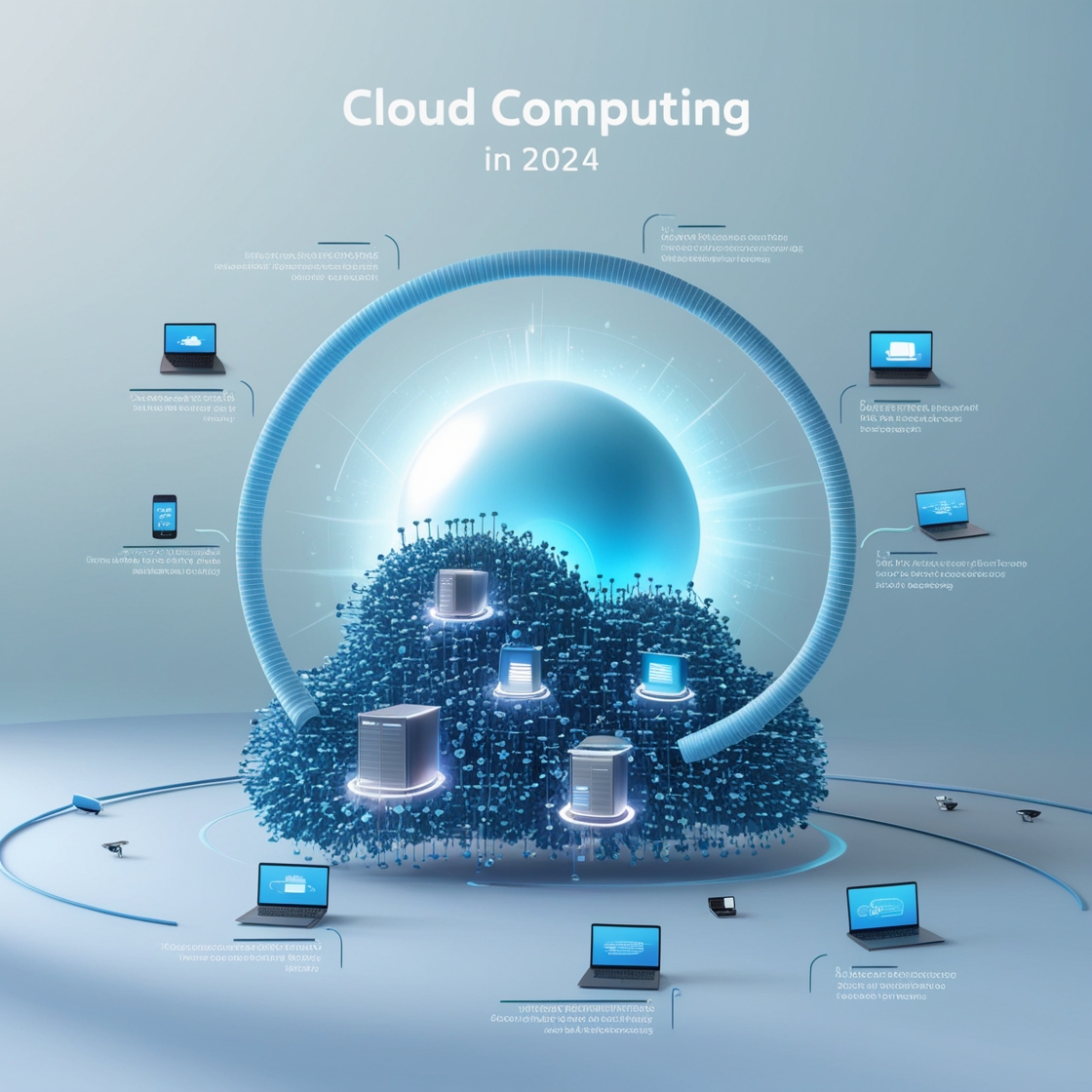Introduction
What Is Cloud Computing?
At its core, cloud computing is the delivery of computing services—such as storage, databases, networking, and software—over the internet (“the cloud”). Instead of owning and maintaining physical hardware, businesses can access these resources on-demand, making their operations more agile and cost-effective.
Why Is Cloud Computing Important in 2024?
Cloud computing has become the backbone of modern digital transformation. With businesses increasingly adopting remote and hybrid work models, the demand for cloud solutions continues to soar. In 2024, it’s not just about adopting the cloud but leveraging it to innovate and stay competitive.
Current State of Cloud Computing
Major Cloud Providers and Their Market Share
Big names like Amazon Web Services (AWS), Microsoft Azure, and Google Cloud dominate the industry. Together, they control the lion’s share of the market, but smaller players are gaining traction by offering niche solutions.
Key Developments in 2023
In 2023, the cloud landscape saw significant advancements in AI capabilities, the proliferation of hybrid cloud strategies, and stronger emphasis on cybersecurity. These trends set the stage for what we can expect in 2024.
Top Trends in Cloud Computing for 2024
Increased Focus on Multi-Cloud Strategies
Companies are no longer tied to a single cloud provider. Multi-cloud strategies help businesses optimize costs, enhance redundancy, and reduce dependency on one vendor.
Growth in Edge Computing
Edge computing brings computational power closer to the data source, reducing latency and improving efficiency. In 2024, this trend is expected to support industries like healthcare, manufacturing, and IoT.
Advances in Artificial Intelligence and Machine Learning Integration
Cloud platforms are ramping up their AI and ML offerings, enabling businesses to derive deeper insights from data and automate complex processes.
Rise of Serverless Computing
Serverless computing simplifies operations by allowing developers to focus on applications without worrying about underlying infrastructure.
Sustainability in Cloud Infrastructure
Cloud providers are prioritizing energy-efficient data centers and renewable energy sources to reduce their carbon footprint.
- Energy Efficiency and Green Cloud Initiatives: Sustainability is no longer optional. Providers like AWS and Google Cloud are setting ambitious goals for greener operations.
Predictions for the Future of Cloud Computing
Enhanced Cybersecurity Measures
As cyber threats grow, cloud providers are investing in advanced security features, including AI-driven threat detection and encryption technologies.
Expansion of Industry-Specific Cloud Solutions
Cloud platforms are tailoring services for specific industries, such as healthcare, retail, and finance, offering customized tools to address unique challenges.
Quantum Computing Integration
While still in its infancy, quantum computing is expected to begin influencing the cloud landscape, opening doors to unprecedented processing power and problem-solving capabilities.
Benefits of Adopting Cloud Computing in 2024
Scalability and Cost Efficiency
Cloud solutions allow businesses to scale resources up or down based on their needs, reducing costs associated with maintaining physical infrastructure.
Improved Collaboration and Flexibility
With cloud-based tools, teams can collaborate in real-time, regardless of location, boosting productivity and innovation.
Challenges in Cloud Computing
Data Privacy Concerns
As data moves to the cloud, businesses must navigate complex regulations and ensure sensitive information is protected.
Managing Multi-Cloud Environments
While multi-cloud strategies offer benefits, they can also create challenges in integration and management.
Skills Gap in Cloud Technologies
The demand for cloud expertise often outpaces the availability of skilled professionals, posing a hurdle for many organizations.
How Businesses Can Stay Ahead in Cloud Adoption
Emphasizing Training and Development
Investing in employee training ensures teams are equipped to leverage the latest cloud technologies.
Partnering with Trusted Cloud Providers
Choosing the right cloud provider is critical for security, reliability, and support.
Staying Updated with Cloud Trends
Regularly monitoring industry developments helps businesses remain competitive and future-ready.
Conclusion
Cloud computing in 2024 is poised to revolutionize the way businesses operate, innovate, and grow. By embracing trends like multi-cloud strategies, edge computing, and sustainable practices, organizations can stay ahead in a rapidly evolving landscape. However, challenges like data privacy and skills gaps need to be addressed proactively.
FAQs
1. What is the most significant trend in cloud computing for 2024?
The adoption of multi-cloud strategies and the rise of edge computing are key trends to watch.
2. How does edge computing impact cloud computing?
Edge computing reduces latency by processing data closer to its source, enhancing efficiency and speed.
3. What are the benefits of a multi-cloud strategy?
Multi-cloud strategies provide flexibility, cost optimization, and reduced vendor lock-in.
4. Is cloud computing secure for businesses?
Yes, but it requires robust cybersecurity measures like encryption and multi-factor authentication.
5. What industries benefit the most from cloud solutions?
Healthcare, finance, retail, and manufacturing are among the industries reaping significant benefits.
